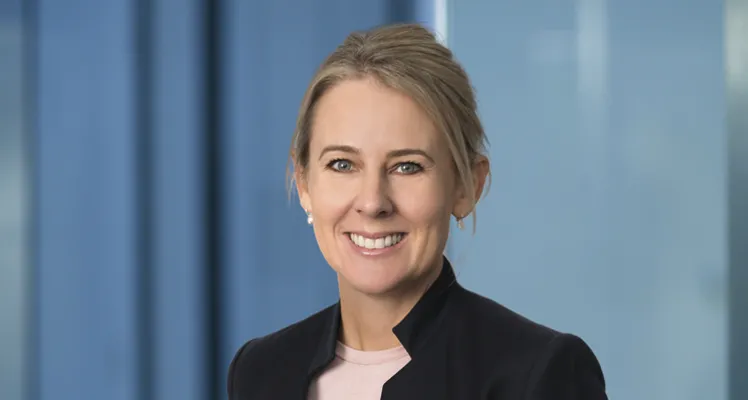
Trusts, a pandemic-proof solution?
信托,经得住疫情考验的财富管理解决方案?
It is fair to say that 2020 and 2021 will linger long in the collective memory, if only because most of us had no prior experience of life under lockdown restrictions. Pandemics are not particularly new, though.
尽管疫情流行在人类历史上并非第一次,可平心而论,2020 和 2021 这两个年头会长时间占据公众的记忆,这无非是因为我们大多数人之前从未有过在封锁限制下生活的经历。
Several plagues hit Elizabethan England in the late 16th and early 17th Centuries and William Shakespeare supposedly made best use of his time under quarantine during the plague of 1606 to write his masterpiece, King Lear. The historic proof of this causal link is thin but nevertheless, the play enunciates several universal and timeless truths about the fragility of human relationships which will resonate with post-pandemic trust practitioners over 400 years later. In particular, Gloucester’s terse remark:
“Love cools, friendship falls off, brothers divide; in palaces, treason; and the bond cracked ’twixt son and father … we have seen the best of our time” [1]
is arguably the pithiest and bleakest justification for why high net worth individuals have always favoured the use of trusts for their private wealth holding structures in modern times and why they will continue to do so.
Trusts have been a mainstay of English law for many centuries primarily because they are capable of ensuring that a corpus of wealth is preserved for the benefit of a defined class over the course of many years and notwithstanding any actual, potential, current or future discord between family members. At its core, a trust provides a settlor with a simple and straightforward mechanism for the deferred transfer of wealth. The property which is settled into the trust will ultimately end up in the hands of one or more of the beneficiaries but at a time and in a manner of the settlor's choosing.
In an increasingly complex and ever-changing business environment, trusts endure in the financial services landscape as a means to protect, preserve, and generate wealth for current and future generations. This makes sense as they are well-established, widely recognised and capable of managing whatever foreseeable or unforeseeable risks arise from time to time. Such risks might include, in Shakespearean language, claims arising from the cooling of love (a future spousal claim), a friendship falling off (a claim by a former business associate), brothers divided (a forced heirship claim in relation to a deceased parent’s estate) or, if not quite high treason in palaces, then some element of political instability (several foreign governments of "less happier lands" have been known to impose arbitrary seizure orders on their citizens with little or no prior notice). Lastly, and being mindful the impact of the COVID-19 pandemic, it has never been more important to save something for a rainy day or, to coin the title of another work by the Bard, the next Tempest.
Pandemic-Proof Wealth Management
The recent pandemic has, in one sense, acted as a global "pause" button. Not many people could claim to have written a complete play during lockdown but for a good proportion of high net worth individuals, the "break from the norm" became an opportunity to take stock of their personal affairs and to undertake some long-overdue succession planning. Exact numbers are hard to come by but anecdotal evidence from trust practitioners and the wider private client industry would suggest that there was a general upswing in the number of trusts being established during this period which, in all likelihood, was due in part to the enforced period of self-reflection. This was probably not surprising as the separation of legal and beneficial ownership, which is the hallmark of a trust, means that the trustee and not the beneficiaries will be the registered owner of the trust assets. This basic division of ownership provides that trusts have several key features which have always made them ideally suited for long-term and "pandemic-proof" wealth management and preservation.
Firstly, a trust has always been an inherently private arrangement and a trustee is under a general duty to keep information regarding the trust and the trust property confidential. The trust instrument is not a public document and is not required to be registered in any official or public register maintained by any governmental authority, except in the limited case of certain unit trusts used for commercial purposes.
Since the property which is settled into a trust does not form part of the settlor's estate on death, a grant of probate or other similar formalities will not be required in order to deal with the property held in trust after the settlor's death. There is also the scope for a settlor to use a trust to free himself/herself from any "forced heirship" rules which might otherwise apply to his/her estate. Jersey law, for example, has advanced "firewall" provisions which state that, in relation to a person domiciled outside Jersey, the forced heirship or any other similar rules of foreign law will not affect any transfer or disposition of property by a settlor into a Jersey proper law trust. As a result, the settlor can place his/her assets into a Jersey proper law trust free from any domestic restrictions. For this reason, one sometimes sees trusts being established by settlors from the Middle East who wish to ensure that their sons and daughters each receive an equal share of their estate, rather than, say, a fixed proportion as determined by a particular school of Shar'ia law.
Trusts are also a natural fit with structures which are intended to carry out philanthropic work. Most international finance centres have now enacted specific laws so as to permit trusts which have a mix of charitable and non-charitable purposes to be validly created. The STAR trust and the VISTA trust regimes in the Cayman Islands and the British Virgin Islands respectively are just two of the better known examples. It is also common to see trusts being used by high net worth families as vehicles for their philanthropic work. Moreover, philanthropic projects are often a key component of a family constitution (a formal document which sets out the rights, values, responsibilities and rules applying to stakeholders in that family's business/wealth and provides plans and structures to deal with situations which arise in the course of the family business' operations) as they can help to create the "glue" which will bind a particular family together in the future. Again, there is a dearth of clear evidence but anecdotally most professional trustee services providers have seen an increasing demand for charitable trusts from high net worth clients recently, which is perhaps one of the good news stories from the lockdown.
It is true to say that a properly drafted and well-administered trust will provide the settlor and/or the beneficiaries with an appropriate level of effective asset protection, but it is important to bear in mind what that might mean in practice. One sometimes sees a trust being actively marketed as "an asset protection trust" but there is no particular legal significance in this label. At the heart of any trust is the onerous obligation on the trustee to safeguard the trust property and so, a so-called asset protection trust is, in reality, no different from any other sort of trust in that regard. More often than not the words "asset protection trust" tend to be used as an informal description of a trust, the primary purpose of which is to protect certain assets from actual or potential claims which may be made by creditors and/or claimants against the settlor or one or more of the beneficiaries. The class of potential creditors/claimants is a wide one and, by way of example, it could conceivably include a trustee in bankruptcy of the settlor and/or any beneficiary.
Most jurisdictions impose some general, common-sense limits on debtors and provide creditors with some general, common-sense "claw-back" rights. For instance, Jersey law does not enable a debtor to escape his existing creditors by settling property into a trust if the debtor is insolvent at the time of the transfer, or if he becomes insolvent as a consequence of the transfer and the transfer is made with the intention of putting the property beyond the reach of those existing creditors. Any transfer made in contravention of that particular "clawback" rule is liable to be set aside by the Jersey Court. However, if a settlor has no actual, future or contingent creditors when he transfers property to trustee, then the trust should protect the trust property from claims of subsequent creditors of the settlor (and, in all likelihood, from any creditors of each of the beneficiaries) especially if the settlor has given proper consideration to the selection of his trustees and situs of the trust property.
In summary, trusts have a long and credible history as a wealth preservation tool. The pandemic has had many consequences for us all, some good, some not so, but it has, if nothing else, created a renewed interest in the use of trusts for long-term wealth planning and charitable giving; something positive for us all to bear in mind next time "a plague is on our houses".
-------------------
[1] King Lear, Act 1 Scene 2 (1606)
An original version of this article was first published by IFC Review, January 2022.
© Carey Olsen 2022.
16 世纪末 17 世纪初,瘟疫数次袭击伊丽莎白时代的英国。据说威廉·莎士比亚在 1606 年瘟疫流行时期充分利用隔离时间创作了不朽杰作《李尔王》。尽管这方面因果关系的历史证据并不充分,但该剧阐明的关于人类关系脆弱性的普遍永恒性真理,却在 400 多年后的疫情大流行后期的信托从业人员中引起共鸣。尤其如葛洛斯特 (Gloucester) 的简短评论所指出:
“爱人互相疏远,朋友变为陌路,兄弟化成仇雠;宫廷之内潜藏着逆谋;父不父,子不子,纲常伦纪安全破灭……我们最好的日子已经过去。”[1]
在现代社会,高净值人士为何一直倾向于使用信托作为其私人财富持有结构且继续坚持使用?此评论正好解释了他们这样做的最直白、最无可奈何的理由。
许多世纪以来,信托一直是英国法律的重要内容,主要原因是它可确保财富本金长久以来为某一特定阶级的利益而实现精准传承,无论其家庭成员之间有任何当前的或未来的实际或潜在的不和。就其核心而言,信托为委托人提供了一套简单而直接的财产递延转移服务机制。纳入信托的财产最终将交到一位或多位受益人手中,但交付的时间和方式由委托人选择。
在日益复杂和变化莫测的商业环境中,信托作为一种为当前以及未来后代保护、保全和创造财富的管理手段,在金融服务领域历久弥新。因信托的运营已非常成熟且受到广泛认可,并有能力应对随时可能出现的任何可预见或不可预见的风险,所以备受青睐。用莎士比亚的话来说,需要应对的风险可能包括爱人互相疏远(未来配偶间的争产)、朋友变为陌路(前生意伙伴的诉讼)、兄弟化成仇雠(对已故父母的遗产争夺战),或者,如果不是宫廷之内潜藏着逆谋,就是一些政治不稳定因素(某些“不那么幸福的地方”的外国政府曾在很少或没有事先通知的情况下,对其公民任意下达扣押令)。最后,在铭记 新冠疫情影响的同时,未雨绸缪或套用莎翁的另一部作品的命名,随时迎接下一场《暴风雨》,则比以往任何时候都显得更为重要。
疫情时代的财富管理
从某种意义上说,最近的疫情相当于给全球按下了“暂停”键。没有多少人真的如莎士比亚般在封锁隔离期间写出了一部完整的剧作,但对相当一部分高净值人士来说,“打破常规”成为其盘点个人事务、实施那些一拖再拖的接班人计划的绝佳机会。尽管准确数字难以获得,但来自信托从业人员和更广泛的私人客户行业的轶事证据,却显示在此期间设立的信托数量总体上呈上升态势,且其极有可能在一定程度上是由于自我反思期间实施所致。这可能并不奇怪,因为法定所有权和实际所有权的分离(这是信托的标志)意味着受托人而非受益人将是信托资产的法定所有者。这种所有权的基本划分为信托提供几个关键特征,且这些特征始终使其成为长期和“疫情时代”财富管理和保值的理想选择。
首先,长久以来,信托本质上而言都是一种私人安排,且受托人有责任对有关信托和信托财产的信息保密。信托文书并非公共文件,除非用于商业目的的某些单位信托的特定情况(也就是市面上的金融信托产品),否则无需在任何政府机构维护的官方或公共登记册中登记。
由于纳入信托的财产不构成委托人死亡时的部分遗产,因此无须办理遗嘱检验认证或其他类似手续,而只是将其作为委托人死亡后在信托保管的财产予以处理。委托人也可利用信托使自己免受任何可能适用于其遗产的“强制继承”规则的约束。例如,泽西岛法律设有先进的“防火墙”条款,规定对于非泽西岛居籍人员而言,强制继承或任何其他类似的外国法律规则不会影响委托人将财产转移或处置纳入泽西岛法律的信托。因此,委托人可将其资产放入泽西岛的合法信托,而不受任何国内规定的限制。基于此原因,人们有时看到来自中东的委托人在泽西岛设立信托,以确保其子女得到相等的财产份额,而并非按照某一伊斯兰教法学派所规定的固定比例
信托也自然契合为开展慈善工作而设立的架构。大多数国际金融中心现在都颁布了专门的法律,以允许合法设立兼有慈善和非慈善目的的信托。开曼群岛和英属维尔京群岛的 STAR 信托制度和 VISTA 信托制度只是其中两个比较出名的例子。信托被高净值家庭用作开展慈善工作的工具,这种现象也屡见不鲜。此外,慈善项目往往是家族宪章(一份正式文件,列出适用于家族企业/财富的利益相关者的权利、价值观、责任和规则,并提供计划和架构,以应对家族企业运营过程中出现的各种情况)的关键组成部分,因为它可以帮助创造一种“粘合剂”,以在未来将一个特定的家族团结在一起。因此,尽管这方面也缺乏确凿证据,但据闻大多数专业信托服务提供商最近都发现,高净值客户对慈善信托的需求越来越大,这或许是封锁隔离期间的一个好消息。
诚然,一份起草得当并管理良好的信托将为委托人和/或受益人提供适当程度的有效资产保护,但重要的是要记住在实践中这可能意味着什么。人们有时会看到,一份信托被积极营销为“资产保护信托”,但这个标签没有特别的法律意义。任何信托的核心都要针对受托人履行保护信托财产的艰巨任务,因此,在这方面,所谓的资产保护信托实际上与任何其他类型的信托并无二致。“资产保护信托”往往是对信托的非正式的描述,其主要目的是为了保护某些资产,免于受到可能由债权人和/或申请人针对委托人或一位或多位受益人提出的实际或潜在的索赔。潜在债权人/申请人的类别很广,举例来说,可以想象的是,其可能包括委托人和/或任何受益人的破产管理人。
大多数司法管辖区对债务人施加一些通用性、常识性限制,并向债权人提供一些通用性、常识性的“追回”权利。例如,如果债务人在转让时破产,或者因转让而破产,并且转让的目的是使财产置于现有债权人的能力范围之外,泽西岛法律不允许债务人通过将财产纳入信托来逃避现有债权人。任何违反特定“追回”规则的转让都可能被泽西岛法院搁置不理。然而,如委托人在将财产转让给受托人时没有实际的、未来的和或有的债权人,则信托应保护信托财产不受该委托人的后续债权人的索赔(而且,很有可能,是来自每位受益人的任何债权人),特别是如果委托人在选择其受托人和信托财产的所在地时给予了适当的考虑。
总之,信托作为财富保值工具的历史悠久且令人信服。于我们所有人而言,此次疫情造成了诸多后果,有好有坏,但至少使人们对利用信托进行长期财富规划和慈善捐赠重新产生了兴趣,从而使之成为如再一次“灾疫盖顶”时,我们都要记住的一些积极的事情。
[1] 李尔王,第一幕第二场(1606 年)
本文最初版本于 2022 年 1 月由《国际金融公司评论》首次发表。






